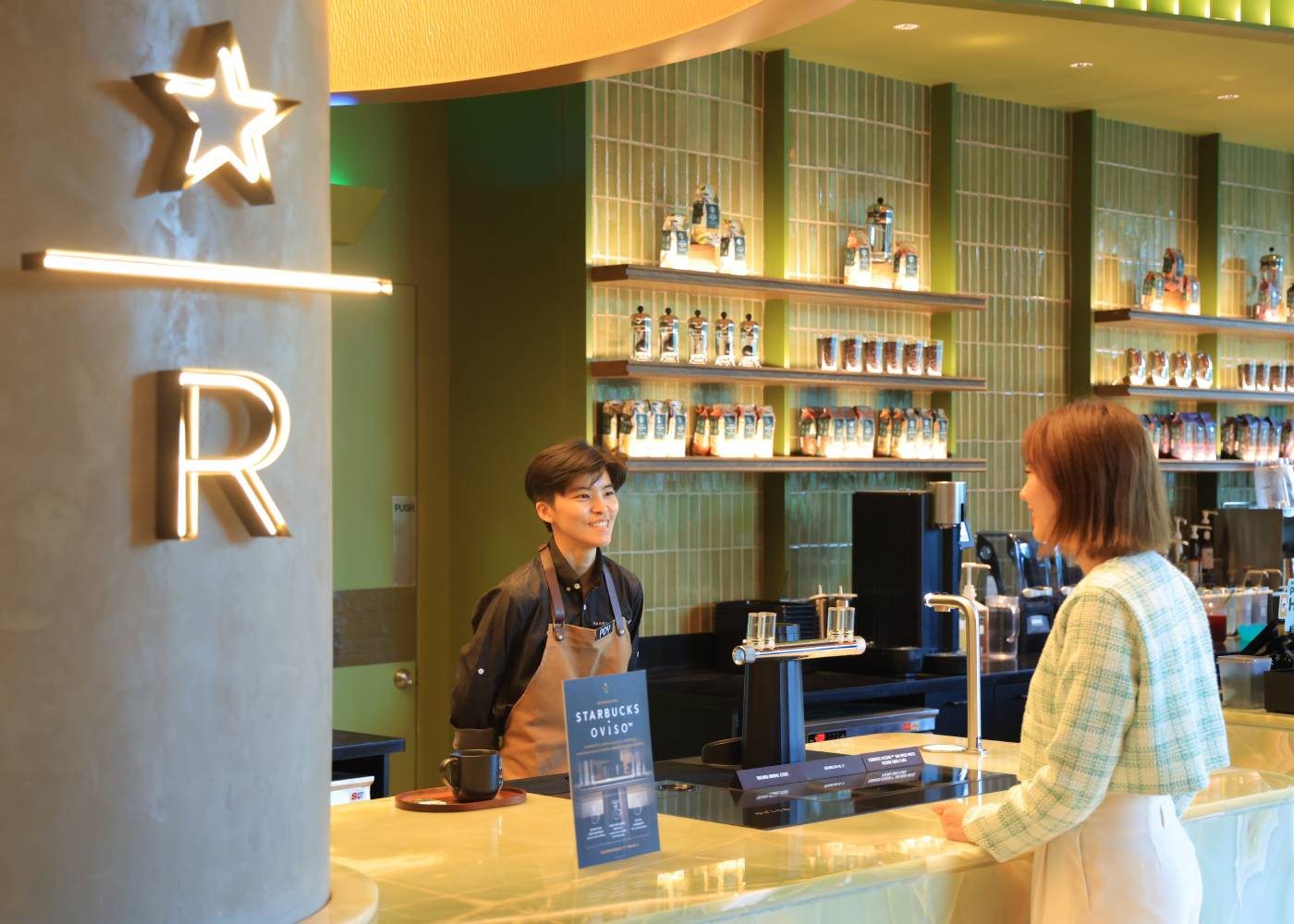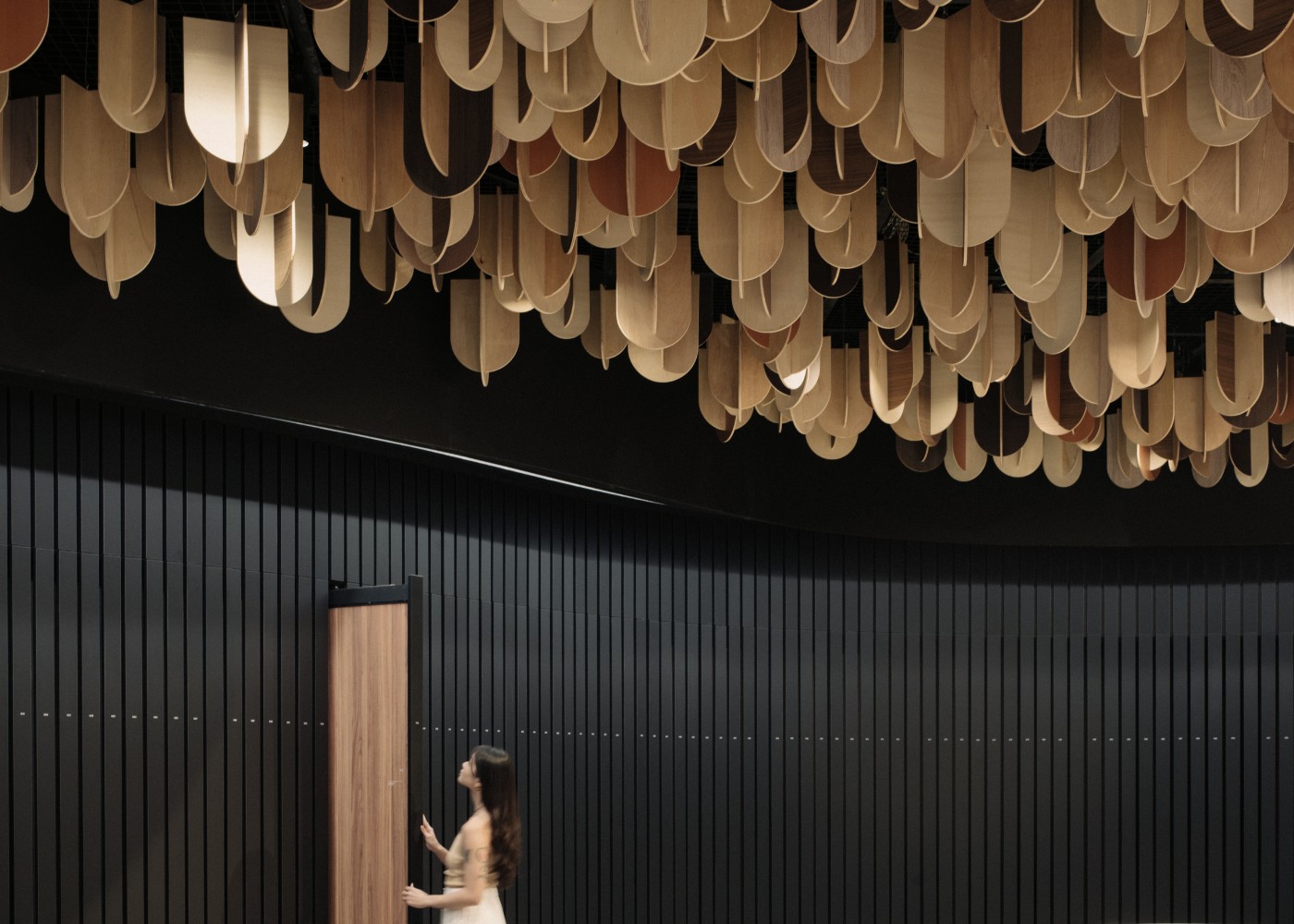Sentosa Sensoryscape: A Harmonious Blend of Nature, Architecture, and Technology
Published on August 28, 2024 | by DSGN arcHive
Curious about a world where nature, cutting-edge design, and digital magic unite? We spoke with the creators of Sentosa Sensoryscape to uncover the secrets behind its success.
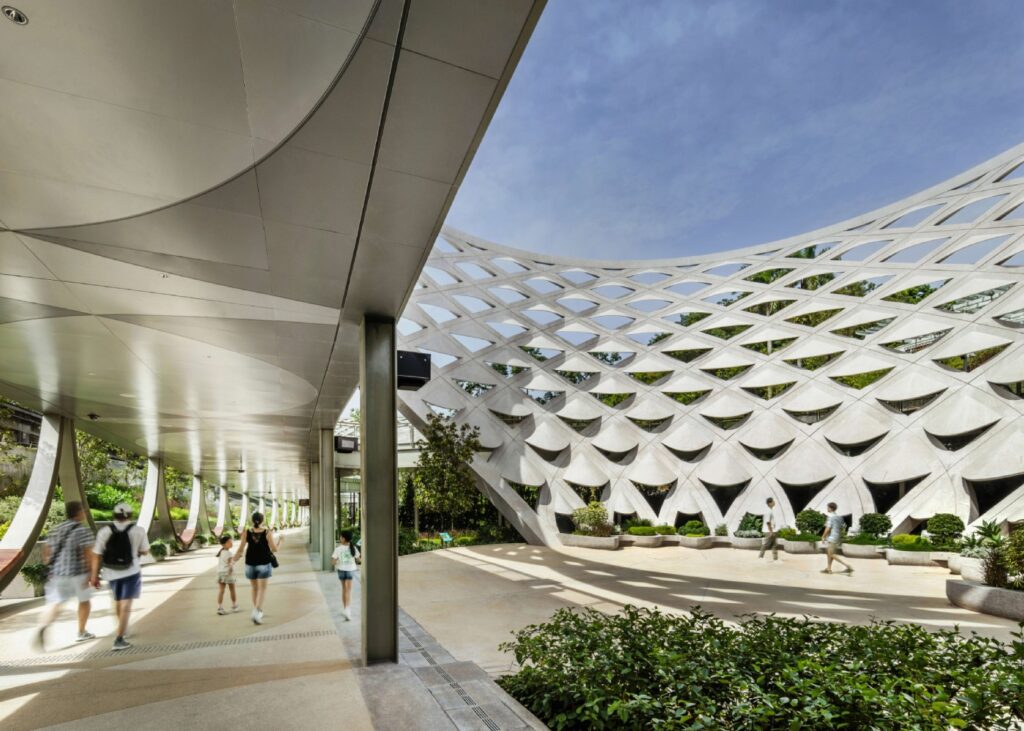
Have you ever wondered what it’s like to step into a world where nature, architecture, and technology blend seamlessly? Sentosa Sensoryscape offers just that experience. This stunning 30,000-square-metre oasis is Singapore’s latest must-see attraction. Stretching from Resorts World Sentosa in the north to the island’s picturesque beaches in the south, it is more than a mere pathway. As the first major milestone of the Greater Sentosa Master Plan, Sensoryscape invites you on a sensory journey. Designed by Serie + Multiply, it’s a place to explore lush sensory gardens and experience the exclusive ImagiNite nighttime augmented reality show.
We had the pleasure of speaking with Chiong Gee Khoon, Deputy Director of Architecture & Land Planning at Sentosa Development Corporation (SDC), and Christopher Lee, Principal of Serie Architects, representing Serie + Multiply (S+M). They offered us an exciting glimpse behind the scenes of this visionary project, revealing the elements that make it a standout success today.
1. Why is Sentosa Sensoryscape considered an architectural feat since the unveiling of the globally renowned Helix Bridge at MBS?
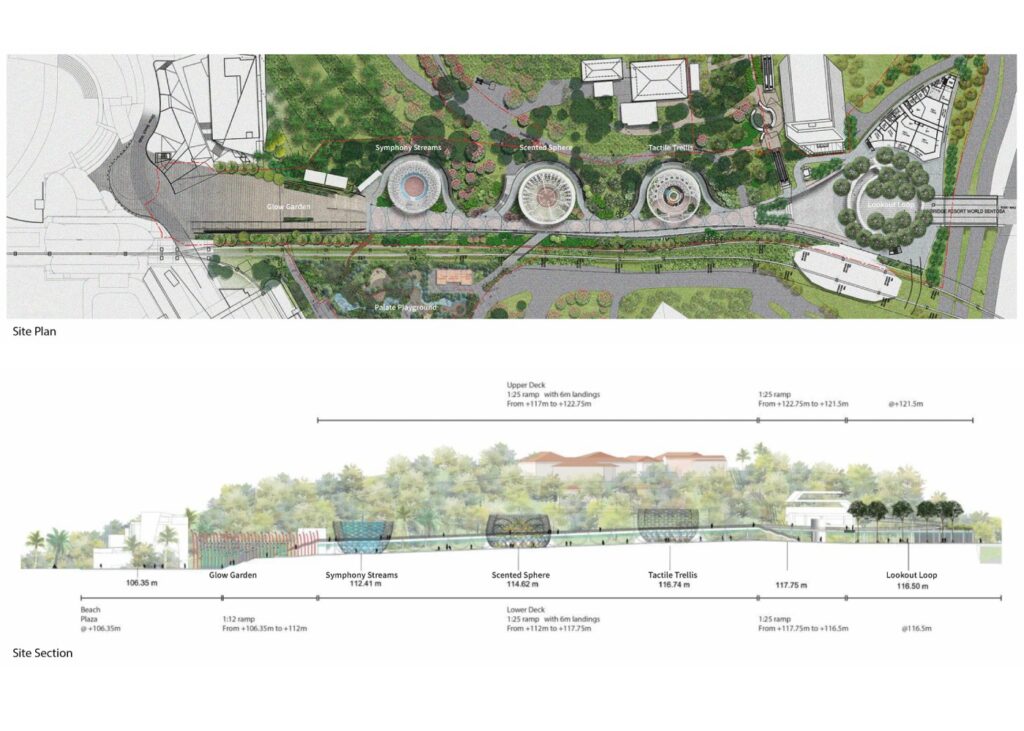
Chiong Gee Khoon (SDC): “Sentosa Sensoryscape is a unique attraction that weaves together the natural surroundings with technology to create a unique experience for our guests. Sensory gardens along the way invite guests to take a breather and reconnect with their senses and the natural world.”
A Symphony of Nature, Accessibility, and Augmented Reality

Chiong Gee Khoon (SDC): “With Sentosa Sensoryscape, we took the opportunity to redesign the entire space and incorporated more than 1,000 trees and plants, about twice as many as the former thoroughfare within the same area. We were also able to integrate Universal Design principles to make Sensoryscape more accessible to guests of various mobilities, with gentle slopes to make for an easy stroll. Most will not notice the difference of 10-metres in elevation between the two ends.
Sensory gardens along the Sentosa Sensoryscape awaken the five senses with the sixth sense of imagination brought to life by ImagiNite, a night-time experience powered by augmented reality with specially curated lighting and audio effects.”
Sensoryscape boasts six sensory gardens: Lookout Loop, Tactile Trellis, Scented Sphere, Symphony Streams, Palate Playground, and Glow Garden. Each garden is distinct and features immersive audio-visual experiences.
Blending Architecture and Nature
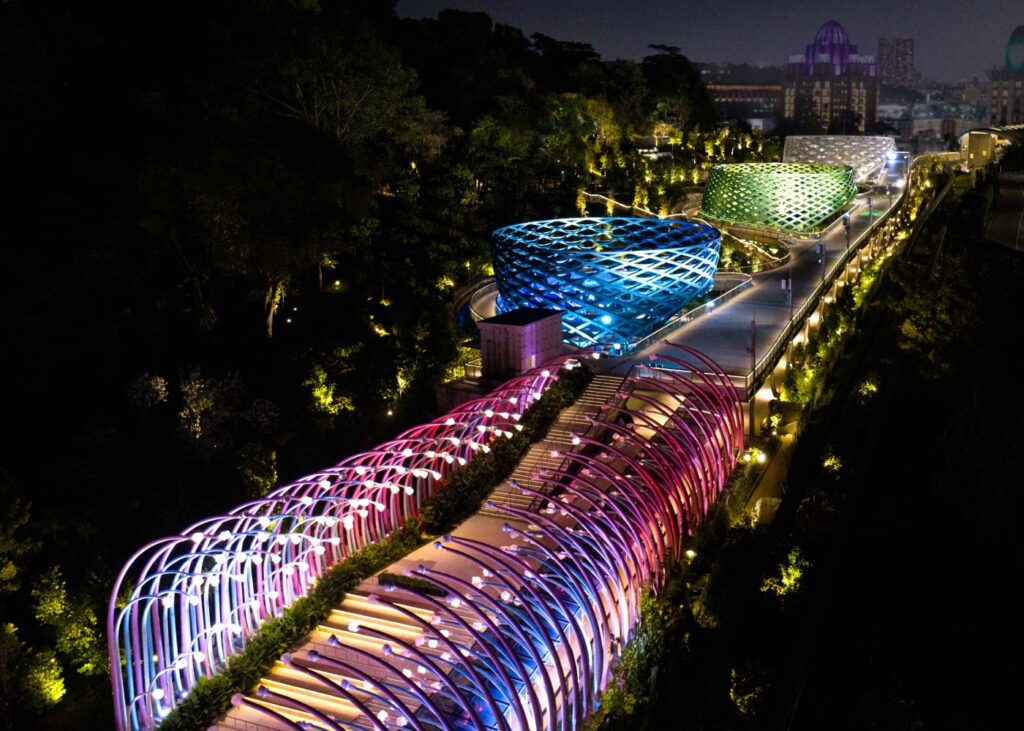
Christopher Lee (S+M): “Our design for Sensoryscape transcends the conventional boundaries between architectural and landscape design. Its sensory gardens, framed by three intricate diagrid structures, encapsulates an immersive experience of Sentosa’s flora and fauna. These delicate woven structures are akin to flower baskets and open pavilions, holding a space for contemplation and bringing a sense of fun in the enjoyment of nature.”
2. The role of Sentosa Sensoryscape in the preservation and conservation of biodiversity on the island and beyond.
a) What are the key design elements that contribute to the preservation of biodiversity?

Gee Khoon: “Sentosa Sensoryscape was designed with careful consideration of the natural environment and sustainable outcomes, preserving biodiversity on the island with seamless integration with the urban development.”
Protecting Biodiversity: Sensoryscape as an Ecological Steppingstone
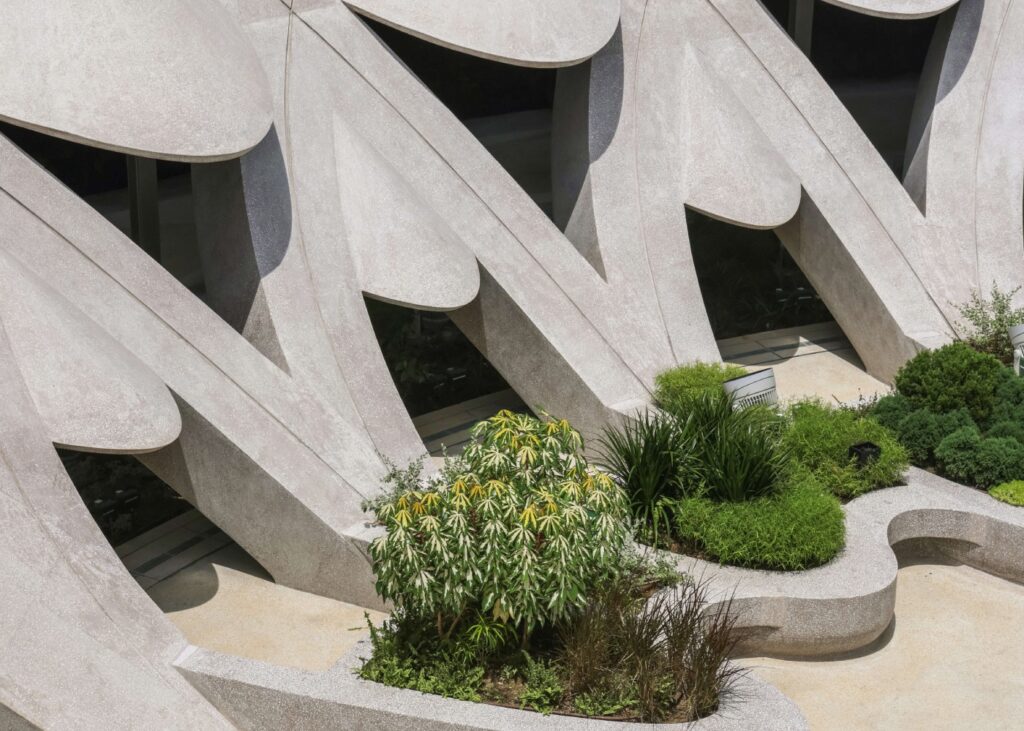
Gee Khoon: “As Sentosa boasts rich biodiversity, it was critical for us to protect these natural ecosystems within the urban landscape. Thus, when we were designing Sensoryscape, which is positioned between two key nature areas of Mount Imbiah and Mount Serapong, we considered using Sensoryscape as an ecological steppingstone for Sentosa’s avian fauna, such as birds and butterflies, across the island’s east-west axis.
More than 165 native and fauna-attracting tree and shrub species were selected and planted in Sensoryscape to ensure biodiversity continuity. This vegetation is planted within varied thematic softscape areas, aligning with the specific micro-climates and design requirements. Additionally, existing ecologically valuable tree clusters were enhanced with additional tree planting to establish canopy connectivity.”
Sensoryscape's Role in Supporting Migratory Birds and Conservation
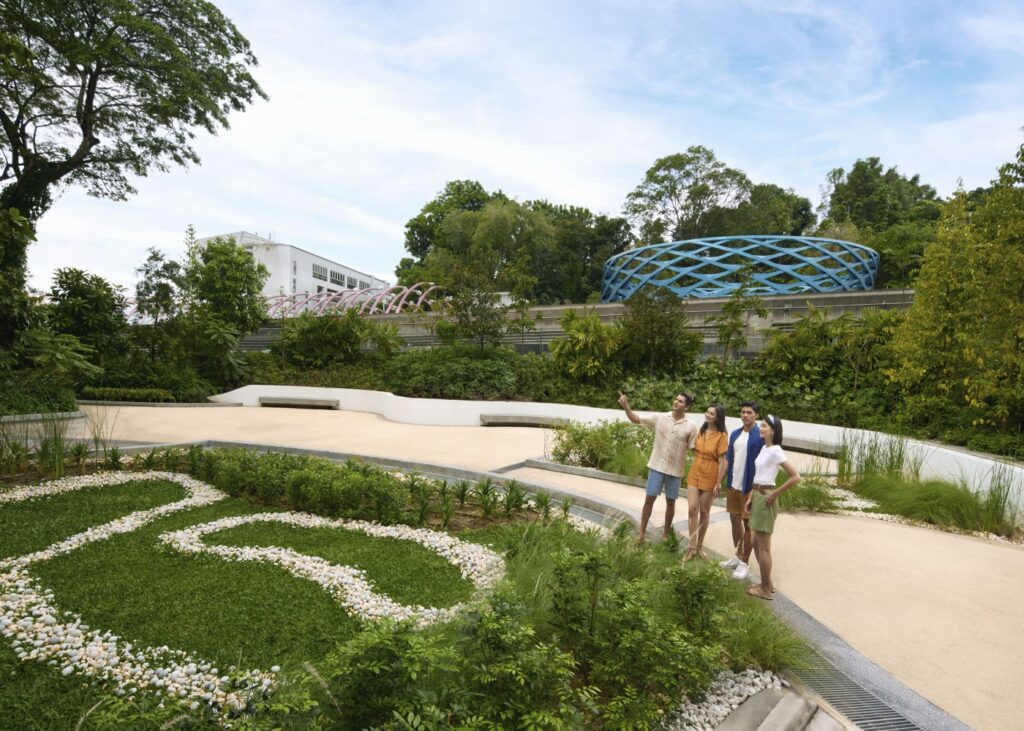
Gee Khoon: “Sentosa’s unique position south of mainland Singapore also makes it a key stopover for migratory birds traveling along the East Asian-Australian Flyway. Sensoryscape is designed to further attract and support these species, contributing to the conservation of Singapore’s natural heritage and aligning with the nation’s vision of becoming a City in Nature.
Overall, the Sensoryscape is a continuously evolving, multi-functional ecosystem. As the landscape matures, it will continue to thrive and grow, amplifying the natural experience while fostering ecological connectivity and preserving biodiversity for future generations.”
b) What was the architectural design concept behind Sensoryscape?
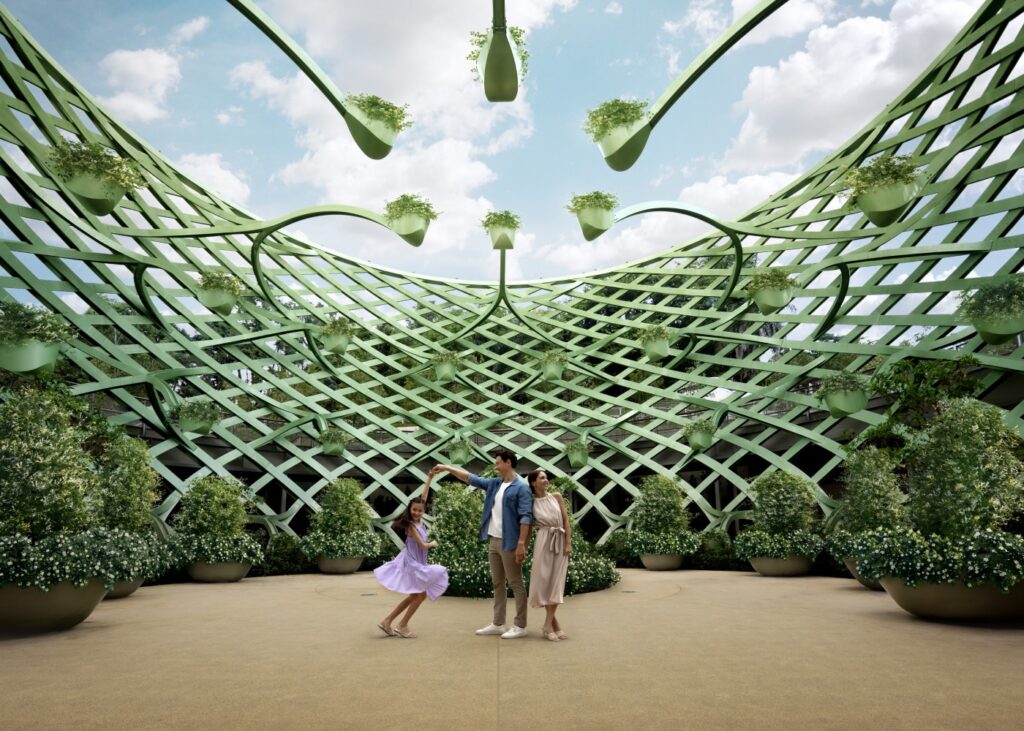
Christopher: “The design for Sensoryscape seeks to strike a delicate balance between nature and structure, and openness and closure. The unique and delicate diagrid structures of the sensory gardens are calibrated to foster a deeper connection with the surrounding environment, and seamlessly blend the built structures with the island’s natural beauty. The lightness and leanness of the structures allow nature, views and light to permeate through the Sensory Gardens whist using the least amount of material necessary for construction.”
Precision Engineering: The Diagrid Design Process at Sensoryscape
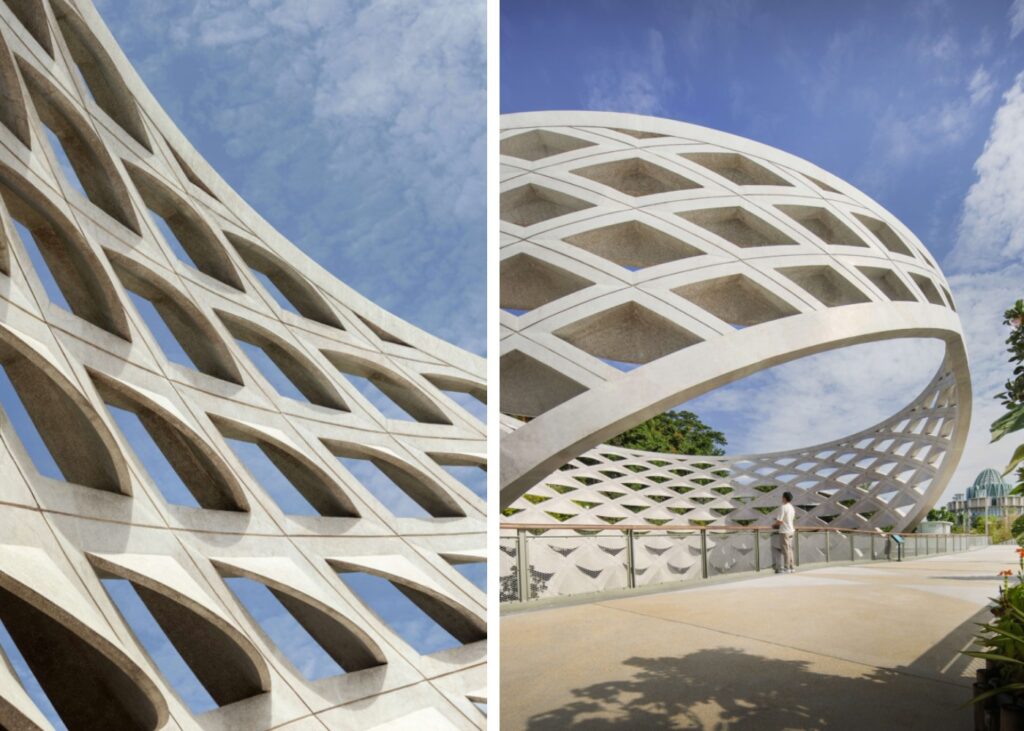
Christopher: “We worked closely with AKT II, our concept structural engineer and devised a solution where each of the structural strand form a continuous arch that weaves through other similar strands forming a basket weave with a dilated opening. As the diagrid and its infill elements are self-similar but not identical, we worked parametrically, using Grasshopper and Rhino as 3D-modelling tools, to create finely differentiated elements that forms a coherent whole.
Using the same software and approach we also set out to design the structure with the absolute minimal amount of structure necessary for it is stand up, making them as lean as possible, and consuming the least amount of material as possible.
Finally, the digital models were then unrolled as flat surfaces and steel plates cut out and rolled back to shape, by TTJ, the specialist steel fabricators. The precast concrete diagrid followed the same design process, but the main structure was cladded in exposed aggregate concrete to give it a more tactile feel.”
Creating a Lasting Impression
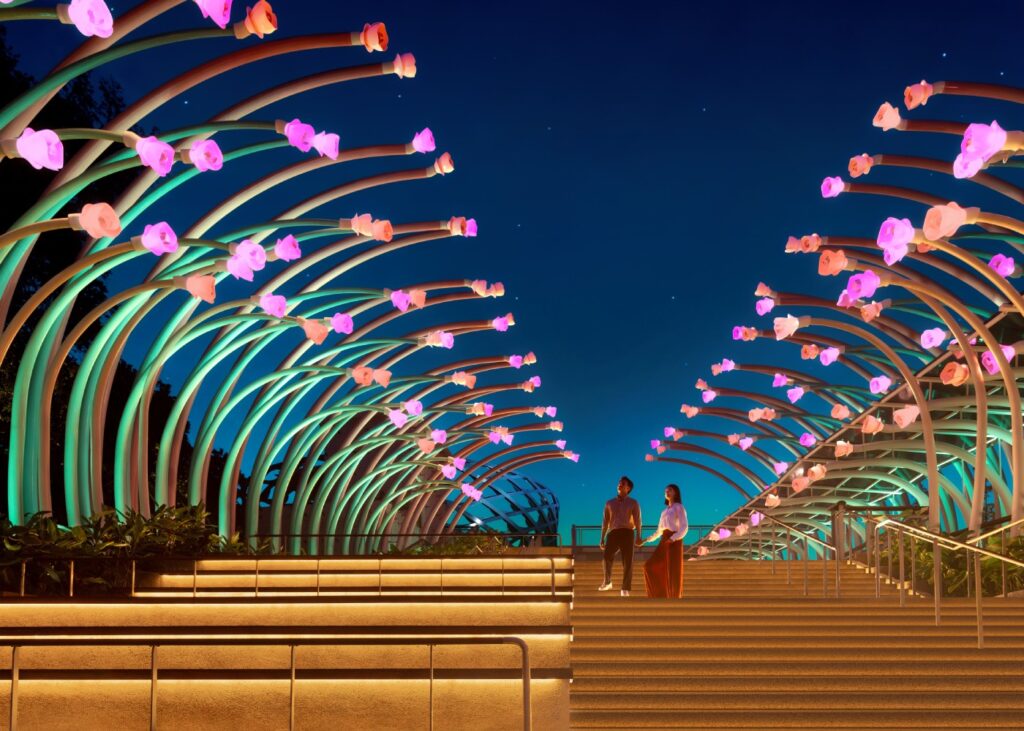
Gee Khoon: “Through these design concepts, we created a space that will captivate visitors without overwhelming them and allowing Sentosa’s natural landscape to take center stage. The space also envelopes visitors in the rich biodiversity and serene atmosphere as they walk through the space, awakening their senses.
Ultimately, the goal is for visitors to form unforgettable memories as they experience both the thoughtfully designed space and the diverse ecological offerings of Sentosa. Whether it’s taking in the vibrant flora, witnessing the movement of native wildlife, or being awed by the interplay of light and nature, Sensoryscape is designed to leave a lasting impression that deepens one’s connection with the natural world.”
ImagiNite
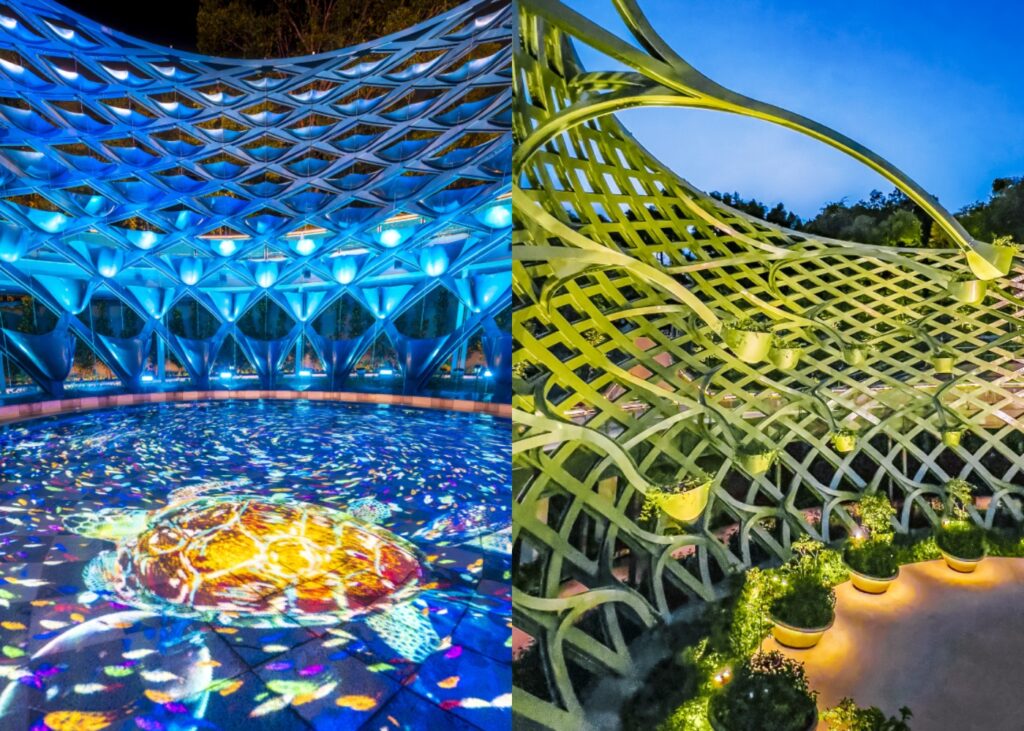
Gee Khoon: “While Sentosa Sensoryscape already has plenty to explore in the day, it truly transforms into another world come night fall. The ImagiNite experience uses augmented reality, digital light and sound projections to further amplify the experience.”
The ImagiNite experience offers a captivating sensory journey, enhancing the overall visit. It blends the five senses with the sixth sense of imagination. From Symphony Streams’ enchanting underwater worlds to Palate Playground’s interactive projections and Lookout Loop’s dazzling light beam dance, augmented reality enriches each environment. By seamlessly fusing the tangible with the virtual, these features elevate the experience. Visitors can explore these augmented reality elements via the ImagiNite mobile app. This integration makes every moment even more immersive and engaging.
About DSGN arcHive
DSGN arcHive is your exclusive key to unveiling the enigmatic essence of a city, all filtered through the prism of design. Far from the ordinary tourist paths. We reveal the city’s architectural marvels, urban intricacies, cultural tapestry, and eco-conscious revolutions that mold its distinctive soul. With us, you’re invited to savor the metropolis in an entirely chic and sophisticated light, a city that’s far more than what meets the eye.
Copyright © 2025 DSGN arcHive

